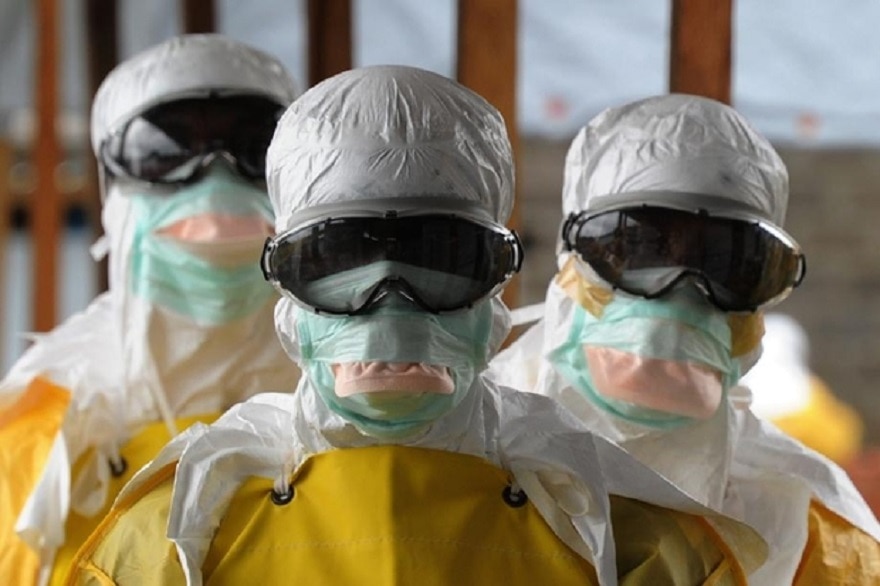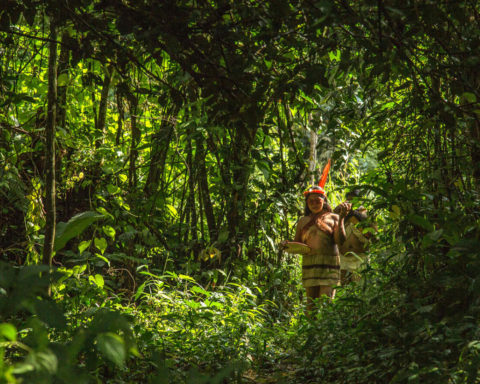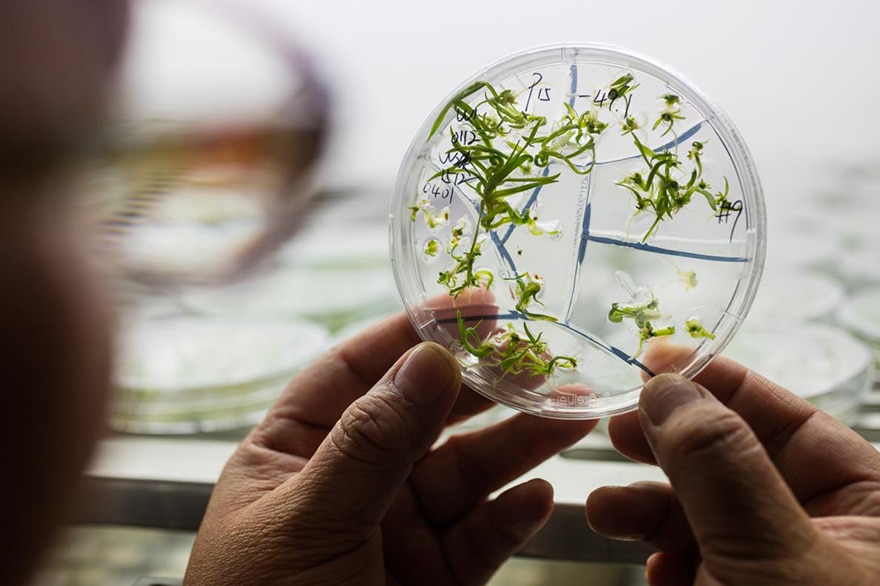Un article paru le 24 août dans Foreign Policy Magazine* souligne les effets explosifs de la biologie de synthèse en matière de défense. La contamination par le virus Zika illustre les risques de pandémie, dès lors que l’on ne connaît pas l’ennemi ! Comment envisager de mettre en œuvre la dissuasion dans ce domaine où les signes de malveillance sont indéchiffrables ? Quels moyens déployer pour décoder une attaque et identifier l’adversaire ? Autant de défis qui exigent une coordination nationale et internationale aujourd’hui, à peine amorcée.
Il y a de nombreux défis en matière de sécurité nationale aux États-Unis, mais trop souvent notre attention est exclusivement focalisée sur les menaces terroristes, la géopolitique et les cyberattaques.
Alors que le pays affronte l’arrivée du virus Zika et envisage des interdictions de voyage vers Miami, il est temps d’avoir un débat approfondi sur les menaces posées par la biologie.
Certes, nos vies sont de plus en plus enchâssées dans le cybermonde. Le superordinateur que vous transportez est un synthétiseur de toutes les connaissances (la photographie, l’art, la musique, et les données du monde). Il est aussi une sorte de machine à rayons X qui peut fournir des indications sur les plus profonds recoins de nos vies personnelles : nos préférences, des choix, des moments intimes, la santé, les achats et en effet notre caractère.
Mais l’impact de toutes ces données est bien peu de choses en comparaison de ce qui se prépare sur le chemin de la révolution biologique. Les développements biotechniques détermineront le cours du XXIème siècle. Ebola, Zika et l’émergence de bactéries super résistantes aux antibiotiques sont les premiers signaux des menaces à venir. La plupart des scientifiques pensent que les technologies biologiques vont introduire les ruptures les plus radicales – à la fois pratique et éthique – dans notre vie quotidienne.
Un élément principal de la révolution biologique sera son impact sur la sécurité au sens large du terme, ainsi que sur le domaine plus spécifique de l’activité militaire. Ces deux préoccupations font partie du travail effectué par les différents laboratoires à travers le monde, y compris ici aux États-Unis à Johns Hopkins Applied Physics Lab, où je contribue comme senior fellow.
Certains des progrès les plus prometteurs faits à JHU APL et ailleurs concernent six domaines : les connexions cerveau-machine qui permettraient l’utilisation des membres déconnectés ; l’identification rapide de maladies en réponse à des épidémies naturelles ou artificielles ; l’intelligence artificielle pour des drones d’attaque autonomes ; l’amélioration des performances humaines, y compris la réduction significative des besoins de sommeil, l’augmentation de l’acuité mentale ; l’amélioration des phanères et la peau «armure» ; et enfin le recours à l’édition CRISPR –Cas, très facile d’usage désormais pour optimiser les génomes (greffes de capacités nouvelles).
La question la plus importante est de savoir comment poursuivre convenablement ces recherches tout en restant dans les limites légales, morales et politiques que notre société doit définir alors qu’elle est bien peu informée. Les scientifiques ressemblent à des soldats en patrouille dans un terrain non balisé, qui est parfois illuminé par un éclair, révélant un sol plus raide et plus dangereux à venir.
Les États-Unis doivent développer une bio-stratégie cohérente car les efforts nationaux de recherche en biologie auront des implications internationales. La diplomatie internationale, qui a structuré le droit de la mer, examine les cadres possibles pour réguler le cybermonde, et pourrait servir de modèle utile. Un défi majeur pour cette diplomatie est que toute nation ou organisation transnationale, ou même tout individu aura bientôt accès – si ce n’est pas le cas déjà – à des outils biologiques qui permettent la manipulation des organismes vivants.
L’essor des technologies de biologie synthétique à bas prix, la baisse du coût du séquençage de l’ADN, et la diffusion des connaissances à travers l’Internet créent les conditions d’un événement biologique. On connaît l’explosion de contaminations terribles comme ce fut le cas avec la grippe espagnole, il y a presque un siècle (1918). Selon certaines estimations, près de 40% de la population mondiale a été infectée, avec un taux de mortalité de 10 à 20%. Si l’on extrapole à la population mondiale actuelle, cela équivaudrait à plus de 400 millions de morts.
Le plus inquiétant serait que des nations-voyous ou des groupes transnationaux violents s’emparent de ces technologies et les utilisent pour créer des armes biologiques de destruction massive.
Chercheur à l’Université Johns Hopkins, Josh Wolfe a souligné : « Les armes biologiques naturelles sont limitées par les caractéristiques des agents qui ne peuvent pas être conditionnés en arsenal. Mais les constructions de biologie synthétique peuvent se prêter à la fabrique d’armes ».
Josh Wolfe se concentre sur la capacité de détecter rapidement les menaces biologiques synthétiques, les analyser, et, peut-être plus important encore, les attribuer – c’est-à-dire, identifier quel laboratoire ou quelle nation est la source de la construction. La recherche de Wolfe pourrait fournir aux gouvernements des informations suffisantes sur les attaques biologiques pour leur permettre de développer des réponses cohérentes – et ainsi jeter les bases d’un régime de dissuasion international. (Dissuader les organisations terroristes d’utiliser de telles armes biologiques si elles étaient en mesure de construire ou de les obtenir serait une tâche beaucoup plus ardue.)
Il y a trois éléments clés pour établir une vigilance contre la bio terreur. Premièrement, nous avons besoin d’une approche internationale qui vise à limiter la prolifération des technologies très dangereuses. C’est un point difficile car les indices capables de révéler des intentions agressives n’existent pas contrairement aux armes nucléaires qui exigent des installations spécifiques. Même le repérage du commerce de gènes de virulence n’est pas suffisant pour alerter… ou suspecter de la malveillance (NDLR : des laboratoires académiques ont construit de toutes pièces les génomes de virus synthétiques de la polyo et de la grippe espagnole, sans être suspectés de bio terrorisme).
Deuxièmement, il faut organiser la coopération dans le cas de contagion ou d’une menace biologique transnationale. Troisièmement, le processus interagences du gouvernement américain doit devenir plus apte à répondre à la fois aux progrès scientifiques et aux défis de sécurité. À l’heure actuelle, la politique fédérale relative à un tel travail est organisée en silos, ce qui empêche de répondre rapidement ou efficacement. Une partie du travail est faite par les Centers for Disease Control and Prevention, ou par le ministère de la Sécurité intérieure, et d’autres responsabilités et capacités sont affectées au ministère de la Santé et des Services sociaux. Parallèlement à tout cela, le ministère de la Défense a développé sa propre capacité assez complexe. Sans une coordination forte, le pays reste aujourd’hui à risque important.
Enfin, cette vigilance exige un niveau puissant de coopération public-privé. Une grande partie des avancées technologiques viendront des entreprises de biotechnologies situées notamment autour de Boston. Il faut les associer à ce défi de sécurité avec les centres gouvernementaux et universitaires comme Johns Hopkins, sans étouffer indûment l’innovation.
Des modèles dans le monde de la cybersécurité existent. En outre, il est impératif d’ouvrir un débat plus large sur l’impact futur des modifications biologiques. En tant que citoyens, nous passons beaucoup trop de temps axé sur l’information et les cybertechnologies. La militarisation de la biologie vient rapidement. Et notre capacité à contrôler ce processus – ou non – déterminera notre destin.
James Stavridis, amiral de l’U.S. Navy, commandant de l’OTAN et doyen de l’École Fletcher de droit et de diplomatie à l’Université Tufts.
Texte traduit par Dorothée Browaeys
* Fondé il y a quarante ans par Samuel Huntington, Foreign Policy Magazine réalise une veille sur les principaux enjeux mondiaux. En 2013, ce media a été acheté par Graham Holdings Company, anciennement le Washington Post Company.
S’abonner
Connexion
0 Commentaires
Inline Feedbacks
View all comments












